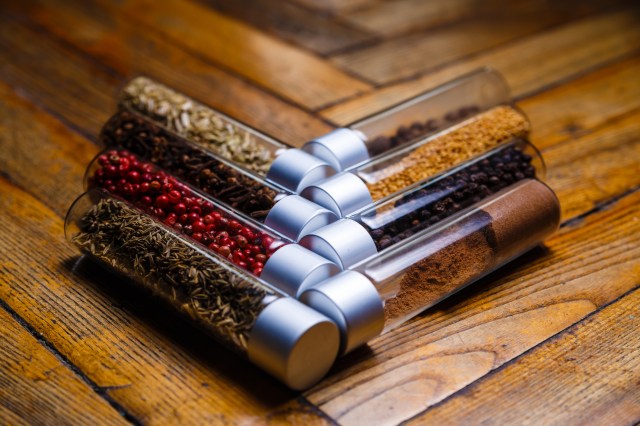
Spices and herbs are the secret weapons in your culinary arsenal, especially when it comes to low carb cooking. We go beyond the basics with these tips for bringing out the best in your spice rack and herb garden and transforming your low carb meals from mundane to mouthwatering.
Get to Know Your Spices and Herbs
Understanding which spices and herbs complement certain food groups is key.
Spices and Herbs 101:
Spices
- Cardamon: Used in both sweet and savory dishes, it’s found in Indian curries, Scandinavian baked goods and Middle Eastern coffee and chai tea.
- Chili powder: Essential in Mexican cuisine, it’s great with meats, beans, and marinades and rubs.
- Cinnamon: It pairs well with sweet dishes like desserts and baked goods, and it can add warmth to savory dishes like Moroccan tagines and Middle Eastern stews.
- Coriander: This seed brings a citrusy nutty flavor to Indian curries, Latin American salsas and is also used in spice rubs for meat.
- Cumin: Works well in Mexican, Middle Eastern and Indian dishes and chili.
- Garlic powder: Adds a savory depth to almost any dish, especially soups, sauces and grilled meats.
- Ginger: Fresh ginger adds zing to stir-fries and soups and is also used in sweets like gingerbread and pumpkin pie.
- Nutmeg: Complements sweet dishes like puddings and pies as well as savory dishes like Italian stuffed pastas and cheese sauces.
- Paprika: Adds smoky flavor to meats, soups and stews and is a key ingredient in many Spanish, Hungarian and South American dishes.
- Turmeric: Gives a warm, bitter edge and robust color to curries, rice dishes and mustards. It’s a staple in Indian cooking.
Herbs
Basil: This herb shines in Italian cuisine, pairing perfectly with tomatoes, mozzarella, and pasta dishes as well as with chicken and fresh salads.
- Cilantro: Essential in many Mexican and Asian dishes, cilantro complements spicy foods, avocados and is a key ingredient in salsas and curries.
- Dill: This is especially good with fish like salmon and in creamy dressings or dips. It also goes well with potatoes and cucumbers.
- Mint: Adds fresh taste to lamb dishes, fish, salads and Middle Eastern cuisine. It’s a lovely drink garnish and sprinkled over fruits like strawberries and watermelon.
- Oregano: A stable in Italian and Greek cooking, it complements tomato-based dishes, grilled meats and roasted vegetables.
- Parsley: Its bright and slightly peppery flavor can freshen up sauces and salads and goes well with fish, potatoes and grains like rice and quinoa.
- Rosemary: It has a woody, citrus aroma and is excellent with roasted meats like chicken, lamb and pork, as well as potatoes and breads.
- Sage: Its earthy flavor is a natural match for pork and beef and goes hand-in-hand with stuffing and butternut squash.
- Thyme: A versatile herb that works with nearly everything, from chicken and beef to tomatoes, eggplants and mushrooms.
Top Tips for Mastering the Spice Rack
- Don’t skimp on quality. Invest in high-quality, fresh spices. They have a more potent flavor so you can use less, and they don’t have added filers. Whole spices can last about 4 years, ground spices for about 2 to 3 years, and dried leafy herbs for 1 to 3 years.
- Toasting time. Toast spices briefly in a hot, dry pan to release their oils and deepen their flavor before cooking.
- Layer flavors. Add spices and herbs and different times throughout the cooking process. Start with robust spices like bay leaves or cumin early on and finish with delicate ones like cilantro or basil.
- Pair with fats. Many spices are fat-soluble, meaning they release flavors in oil or fat. Sauté your spices in butter or oil before adding other ingredients.
- Zest it up. Don’t forget citrus zests; they can add flavor without carbs and work well with sweet and savory dishes.
- Turn up the heat. Cayenne and chili can kick up the flavor and heat, and research shows that spicy foods may boost metabolism and increase feelings of satiety.
Fresh Flavors: Low Carb Meals Bursting with Spices and Herbs
Now that you’re the master of spices and herbs, put these skills to use with these flavor-packed low carb recipes.
